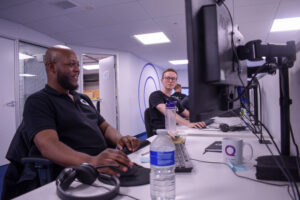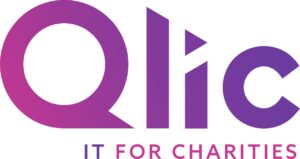
In a world where everything is becoming digital, having a clear IT project plan is a key tool for charities, not just a technical necessity. By aligning tech strategies with their organisational goals, nonprofits can better streamline operations, boost outreach, and maximise their fundraising efforts.
When executed properly, technology has the power to drive meaningful change, improve productivity, and boost impact across every aspect of nonprofit work. As technology evolves, more charities embark on the journey of digital transformation and a robust IT project plan becomes vital to guiding that transformation process successfully.
This blog provides a practical, step-by-step guide for creating and implementing an IT project plan tailored to the unique needs and constraints of charity organisations. We’ll also feature proven best practices for managing IT projects within tight budgets and limited resources, ensuring that your technology investments deliver long-term value and considerable outcomes.
What is a Charity Organisation IT Project Plan?
A charity organisation IT project plan is a structured, actionable document that outlines the specific steps, timelines, resources, and responsibilities needed to implement a technology initiative successfully. It transforms high-level strategy into a detailed blueprint for action, guaranteeing that every team member, vendor, and stakeholder understands their role and the project’s ultimate objectives.
For charities operating on tight budgets, having a clearly defined IT project plan is key to ensure all available resources are optimised. It helps them stay organised, avoid projects getting bigger than planned, and get things done on time and without spending too much.
It’s important to understand that an IT project plan is different from an IT roadmap. While the two are related, they serve different purposes. An IT roadmap is a high-level, strategic document that outlines what technology initiatives the organisation will pursue and why they are important. It helps leadership arrange goals, align tech investments with the broader mission, and visualise progress over a multi-year period.
On the other hand, an IT project plan gets into the nitty-gritty of how to realise the goals specified in the roadmap. It’s far more detailed, identifying the steps required to deliver on the strategic goals laid out in the roadmap. For example, if the roadmap indicates that you need a new customer system in the next year and a half, the project plan would explain how to choose the company to buy it from, how to move all the old information over, when everyone will get trained, and how to track progress.
Both tools are important, but while the roadmap sets the destination, the project plan maps out the journey in clear, actionable terms.
Key Steps in Developing an Effective Nonprofit Technology Plan
Taking a methodical approach to developing your nonprofit’s IT project plan is necessary to avoid wasting time, money, and effort. Without a clear structure and direction, nonprofit organizations risk investing in the wrong technologies, duplicating efforts, or implementing solutions that don’t fully support their mission.
By breaking the process down into identified stages, you can build a plan that is not only practical but also sustainable and aligned with long-term organisational goals.

Understanding the Unique Needs of Your Charity
Every charity has a unique mission, and your technology strategy should reflect that. Before diving into tools and timelines, start with a deep insight into your organisation’s goals and how IT can support them. This means investigating your current business operations and identifying opportunities where digital tools can drive meaningful change. A strong digital strategy for your charity should be rooted in your core mission and strategic plans, ensuring that every project contributes to achieving your overall goals.
Common challenges like limited funding, volunteer-based teams, outdated it infrastructure, and complex donor management systems can make IT planning especially difficult for charities. That’s why it’s critical to align each technology initiative with the problems you’re trying to solve. For example, if your charity struggles with data security, part of your IT strategy might involve upgrading to a secure cloud-based CRM. If donor engagement is the issue, your plan may focus on marketing automation or developing online giving platforms.
Mapping Your IT Needs and Defining SMART Goals
Once you’ve refined your strategic direction, the next step is to conduct a detailed assessment of your current IT environment. This includes evaluating your it infrastructure, hardware, software, cybersecurity measures, and staff capabilities. While your IT roadmap will outline these areas at a strategic level, your project plan should zoom in on the specifics, identifying gaps, prioritising upgrades, and detailing how to manage or replace legacy technology that may be holding your charity back.
With your IT needs mapped out, you can now set SMART goals: Specific, Measurable, Achievable, Relevant, and Time-bound. These goals provide a framework to keep your project on track and ensure that each milestone delivers tangible value. For example, instead of loosely aiming to “improve sustainability,” a SMART goal might be: “Implement sustainable IT practices by replacing 50% of our charity’s on-premises servers with energy-efficient cloud-based solutions by Q4.”
By setting SMART goals and aligning them with your charity’s mission, you’ll create an IT plan that’s not just technically sound, but also mission-driven and results-oriented.
Project Scope and Timeline
Building on your SMART goals, the next key step is to define the project scope, clearly outlining what the IT project will deliver and what lies outside its boundaries. This helps prevent scope creep and keeps everyone focused on the intended outcomes. For example, if your goal is to launch a new CRM platform, the scope might include data migration, staff training, and integration with existing fundraising tools, but exclude post-launch marketing activities.
It’s really important to set firm deadlines for your immediate goals. Setting benchmark points, such as completing vendor selection within 30 days and full deployment by the end of the quarter, allows you to monitor progress and adjust as needed. A realistic project timeline should include key milestones, deadlines, and time buffers. While having a plan is important, it also needs to be flexible enough to handle changes, especially as your charity grows or new needs arise.
Budgeting and Resource Allocation
Charities regularly face significant financial constraints, so accurate budgeting is a cornerstone of any successful IT project plan. Estimating the costs of tools, services, and manpower helps set realistic expectations and prevents unexpected surprises down the line. IT projects often require upfront investments, which can be daunting for nonprofits working within tight budgets.
To manage this, consider strategies like prioritising high-impact, low-cost solutions, leveraging donated software or volunteer support, and phasing projects over time. Working with a charity IT consultant can also help identify cost-effective technologies, such as discounted nonprofit software licenses or cloud-based platforms, and ensure your spending aligns with your long-term strategy.
Here are some common things charities might budget for:
- Consulting fees
- Software purchases or subscriptions
- Hiring new tech staff
- Custom software development
- New software licenses
- Cybersecurity upgrades
- Training staff members
Each of these should be cautiously evaluated and prioritised based on your charity’s needs and capacity.
Risk Management and Contingency Planning
Every IT project carries risks, and preparing for them is fundamental to minimising business disruptions. Start by identifying potential risks, such as IT outages, cybersecurity threats, or data loss, and develop mitigation strategies for each. A strong risk management plan also includes contingency plans that outline what to do when things go wrong.
For instance, in the event of a data breach where a donor database is compromised, having a clear response plan can control damage and protect your charity’s reputation. Other problems could include software not working together when you try to connect them, or a complete IT failure that stops your charity from functioning. By planning for these scenarios in advance, like planning an IT outage monitoring system, you can respond swiftly and recover more effectively.
Establish and Assemble Your Team
No IT project can succeed without the right people behind it. Start by assembling a project team that includes stakeholders and team members from across your organisation, not just the IT department. Representatives from fundraising, operations, finance, and leadership should all have a seat at the table to ensure the project aligns with the organisation’s broader goals.
Define transparent roles and responsibilities. For example, you might need:
- A Project Manager to oversee timelines and communication
- IT staff or external partners to manage the implementation
- Department leads to represent user needs
- A data officer to ensure compliance and privacy
- Trainers to onboard users
If you lack in-house expertise, outsourcing certain roles or forming a hybrid team of internal and external resources can safeguard both technical depth and organisational insight.
Implementation and Monitoring
With your team in place and your plan finalised, it’s time to put everything into action. Begin with a structured implementation schedule, outlining specific tasks, deadlines, and assigned responsibilities. But the work doesn’t stop there; ongoing monitoring is crucial to ensure progress stays on track and outcomes match expectations.
Establishing Key Performance Indicators (KPIs) allows you to measure success at every stage. For instance, track user adoption rates after launching a new tool, or measure time saved on manual processes through automation. Just as importantly, make sure your staff feel confident using new systems. This is where professional training for nonprofits plays a crucial role, helping to build digital inclusion, confidence, and long-term engagement with the tools you’ve implemented.
Research Technology Vendors and Solutions for Charities
Choosing the right technology vendors and solutions is a critical step in your IT project plan. The right tools can significantly improve efficiency, donor engagement, and internal collaboration, while the wrong ones can waste valuable time and budget. For charities, it’s especially important to find systems that are cost-effective, scalable, and tailored to nonprofit needs.
Common technologies to consider include:
- CRM systems for managing donor relationships and automating communications
- Cloud-based storage solutions and platforms that allow your team to work flexibly and securely from anywhere
- Data analytics tools to monitor campaign performance and make evidence-based decisions
- Online fundraising platforms that streamline giving processes and increase supporter engagement
- Collaboration and productivity tools that keep your team connected and efficient
When researching and selecting technology, here are a few practical tips:
- Evaluate vendor experience with nonprofits. Choose providers who understand the sector’s unique challenges and can offer tailored support.
- Request demos and trials. Test functionality and ease-of-use before committing to a platform.
- Check for charity pricing or donations. Many major vendors offer discounted or free solutions to eligible nonprofits.
- Assess integration potential. Ensure new tools can integrate with your existing systems to avoid future compatibility issues.
- Read reviews and get peer feedback. Insights from other charities can provide real-world perspectives on how tools perform in practice.
By conducting thorough research and taking a strategic approach, you can invest in technologies that empower your charity to do more, with less.
Closing Thoughts
Developing a valuable IT project plan enables nonprofits looking to make the most of limited resources while maximising their impact. By taking a structured approach, starting with a clear understanding of your organisation’s business plan and goals, mapping out your technology needs, setting SMART objectives, and building in realistic timelines and budgets, you can ensure your charity’s IT initiatives are both successful and sustainable.
Whether you’re implementing new fundraising platforms, updating legacy systems, or adopting sustainable IT practices, a robust plan provides the foundation for long-term success.
Partnering with an expert IT provider can further improve your planning process, bringing in the technical knowledge and sector-specific experience to help your charity avoid common pitfalls and implement the right solutions with confidence.
Get in Touch
Start planning your charity organisation’s IT project plan today. Find out how Qlic for Charities can help your business implement your technology plan by getting in touch with the team at Qlic here.






